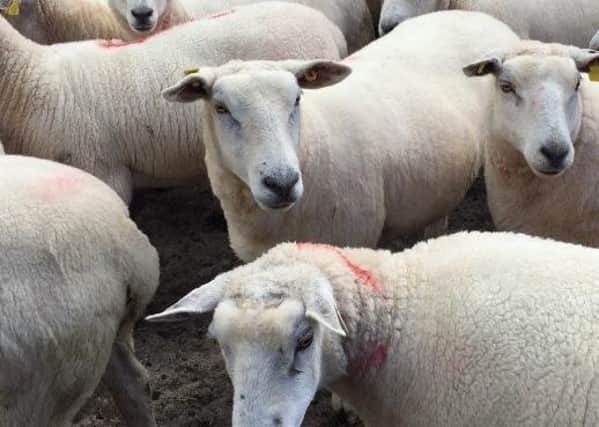Be aware of Scab risk this winter


Advanced Veterinary Practitioner Joe Henry, of Black Sheep Farm Health, says sheep scab is a very real threat, especially at this time of the year with the volume of sheep movements taking place.
“There are a lot of sheep arriving on farms at this time of the year from sales and summer grazing. Any new arrivals should be viewed as a potential source of infection.”
Diagnostics
Advertisement
Advertisement
Where possible, farmers should look to use blood diagnostics to see whether sheep are suffering from an active infection, advises Recognised Sheep Specialist Vet Emily Gascoigne from Synergy Farm Health.
She said: “Because of COVID-19 and evidence of an increasing number of sales moving online with sales direct from the holding, there is an opportunity to conduct blood serology tests (ELISA test) pre-purchase. Blood serology will give you an idea if sheep have been infected and can reduce the need for treatment.
“It is important you don’t share trailers with flocks of an unknown status and also ensure transport is thoroughly disinfected to avoid the scab mite being transmitted on-route,” she added.
Ms Gascoigne also encourages farmers to conduct blood serology on their own flock. “Knowing your flock’s own scab status can help you manage the situation. Where there may have been contact with another flock at a boundary, or shared equipment, this may be as much of a risk as newly purchased animals,” she said.
Advertisement
Advertisement
“Testing can also be particularly useful in organic flocks pre-purchase where the use of Organophosphate Dips (OP) are not permitted,” she added.
Management
Where blood serology cannot be conducted pre-movement, then ideally, any stock moving onto farm should be quarantined for at least three weeks. Blood testing can be conducted two weeks into quarantine to identify any active infection. However, where that is not possible, sheep should be treated.
Mr Henry said: “Practically very few farms can maintain biosecurity for that number of weeks at this time of the year. The problem is the scab mite can live in the environment off sheep for 17 days, so you need to be managing as soon as they arrive on the farm.”
Where quarantine is not possible, he suggests:
- Using an organophosphate (OP) plunge dip (not showering). This is a method of control with no resistance issues. However, this is not always possible, especially where only small batches of sheep are arriving on the farm and possibly at different times.
Advertisement
Advertisement
- Using a macrocyclic lactone (ML) injection such as CYDECTIN 2% LA. There is some evidence of scab resistance to all the injectables, so it is important to take this into consideration. These products are also wormers, so it is important to consider the impact they may have on wormer resistance. Ideally, sheep should be unloaded and treated straight away in cattle pens not sheep pens to prevent any scab mites remaining in the environment.
Sheep infected with the scab mite may not show symptoms for at least 40-50 days or longer post-infection depending on how many scab mites the naïve sheep was infected with. In this time the disease could have spread rapidly within a flock and to neighbouring flocks, which is why blood testing is important as well as telling your neighbours.
“If you identify sheep scab in your flock it is important you tell your neighbours,” Mr Henry said.
“There is no shame in having the disease in your flock, but if you don’t tell your neighbours and their sheep get infected, it will just be a continual cycle passing sheep scab between one another. A coordinated approach is important,” he said.
Using Injectables
Advertisement
Advertisement
Zoetis vet Ally Anderson says when farmers are using injectables for scab control they should remember to avoid repeat doses and make sure their use is necessary to avoid anthelmintic resistance.
Remember scab can live in the environment for 17 days off the sheep and that not all MLs offer persistent scab protection. If using an ML injection that does not provide a persistent action, all sheep will need to be treated on the same day and the sheep need to be moved to a pasture that has been free from sheep for three weeks. CYDECTIN 2% LA offers persistent protection for 60 days and therefore gives management flexibility as the product lasts longer than scab mites can survive off the sheep.